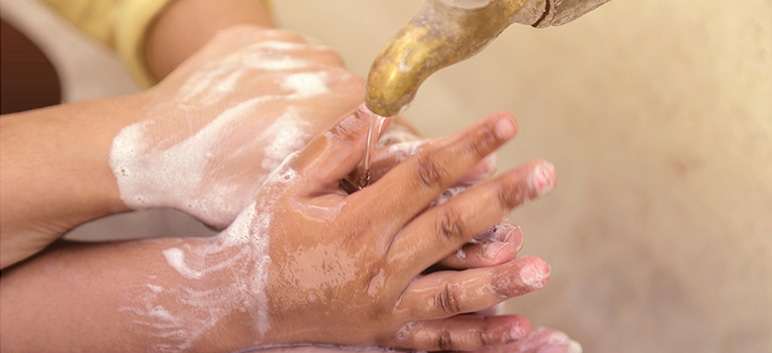News Water Equity Challenges Posed by Coronavirus
The emergence of the novel coronavirus, Covid-19, has put the necessity of safe and sufficient supplies of water and food for all in particularly high relief. In recognition of the connection between water, food, and health, the need to pursue innovative technologies and strategies is all the more urgent.
Abdul Latif Jameel Water and Food Systems Lab March 22, 2020

With Covid-19 spreading like wildfire through populations across the world, we have all heard nonstop messages about how frequent and thorough hand washing is one of the most effective ways to slow the spread of the virus. How many times have you washed your hands today? Preparing food in the kitchen? After using the bathroom? After returning home from the supermarket or drug store? Or touching a doorknob or handle that someone touched before you? Perhaps also after opening the mail? Or petting your neighbor’s dog?
Imagine trying to keep your hands clean and prevent disease if you didn’t have clean water, running water, or a clean sink or bathroom. That is the situation for a substantial portion of the world’s population who lack access to an “improved water source,” and many more who live without running water and basic indoor plumbing. Astonishingly, this includes more than 2 million people in the US.
Largely driven by international travel patterns, the coronavirus got its first major foothold outside of China in countries like Iran and South Korea, followed by prosperous European countries, and the United States. However, it will not be long before a rapid uptick is seen in India, across Africa, and in other countries in Asia, South America, and Central America where many people live without reliable access to clean water, and where medical systems are lacking. The impact will be severe, particularly in large city slums where people live in close proximity without adequate access to water for hygiene.
Addressing public health challenges is substantially more complex where water is scarce or polluted. Without access to safe water to drink and clean water for personal hygiene, public health risks are disproportionately magnified for hundreds of millions of people. For the fast-moving coronavirus epidemic, the situation is especially alarming. Yesterday, on World Water Day, we call on leaders everywhere to recognize the connection between water and health, and to pursue innovative technologies and strategies with a sense of urgency. The MIT water research and innovation highlights below demonstrate the many advances that are becoming available to meet these needs, and the impact J-WAFS is having on addressing challenges across the world.
